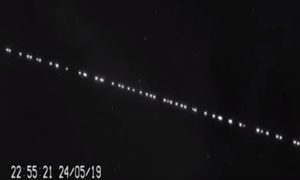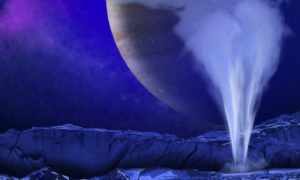The galaxy has experienced two episodes of cosmic gavage separated by billions of years, where it engulfed other galaxies, large and small. Our galaxy is next on the menu.
It’s no longer a secret: Andromeda is heading towards our galaxy. She should reach it and afford it for meals in about 4.5 billion years.
But the Milky Way will not be the first astronomical feast of his neighbor, far from it.
In their work, researchers Dougal Mackey and Geraint Lewis first confirmed, by analyzing trails of stars observed in its wake, that Andromeda had indeed swallowed several galaxies over the last billion years.
Even more voracious than estimated
The scientists also detected traces of other small galaxies that Andromeda would have engulfed no less than 10 billion years ago, almost at the time of its formation.
We have been able to establish how Andromeda did it to attract and ingest them at different stages of its evolution.
This study shows that Andromeda has gone through two major “food episodes” from completely different directions.
“It’s very special. This suggests that these extragalactic meals are composed of material from the cosmic web that structures the Universe,” explains Dougal Mackey.
Andromeda has a galactic halo much larger and more complex than the Milky Way, indicating that it has cannibalized many more galaxies, perhaps larger ones.
Landmarks
- Andromeda was first described in 964 by the Persian astronomer Abd al-Rahman al-Sufi.
- Located about 2.55 million light-years from the Sun (a light-year is 9460 billion kilometers), it is considered the twin sister of the Milky Way, the galaxy in which our solar system is located.
- The Milky Way and the Andromeda galaxy come closer to each other at more than 440,000 km / h.
- These two galaxies belong to a large group of about sixty galaxies known as the Local Group. This group also includes the Large Cloud and Small Magellanic Cloud, and the Triangle and Barnard galaxies.
Next meal, the Milky Way
Andromeda, which has a diameter of about 220,000 light years and contains about a thousand billion stars, now darkens on its neighbor, our galaxy, at a speed of 430,000 km/h.
One of our main motivations in astronomy is to understand our place in the Universe. One way to get to know our galaxy is to study other galaxies that look like it, and to try to understand how these systems were formed and developed.
It’s sometimes easier to look at other galaxies than our Milky Way because we live inside and it can make the observation more difficult
, the researcher continues.
We are cosmic archaeologists. We are exposing fossils of long-dead galaxies rather than traces of human civilizations.
The details of these works are published in the journal Nature.
Not the first and not the last
Another galaxy, the Great Magellanic Cloud, is expected to hit the Milky Way before Andromeda, US astronomers have recently estimated. They could thus merge in 2.4 million years.
Other studies have already shown that the appearance of the Milky Way was the result of celestial collisions. For example, in 2011, the American astronomer Chris Purcell and his colleagues at the University of California claimed that the spiral arms of the galaxy would have deployed following two impacts with the dwarf galaxy Sagittarius.
Jennifer MacBride a graduate of Imperial College Business School. Jennifer is based in London but travels much of the year. Jennifer has written for BBC, Motherboard, Apple Insider, and the Huffington Post UK. Jennifer is a Tech reporter, focusing on technology, national security and social media.






